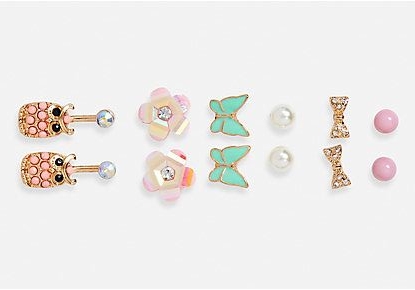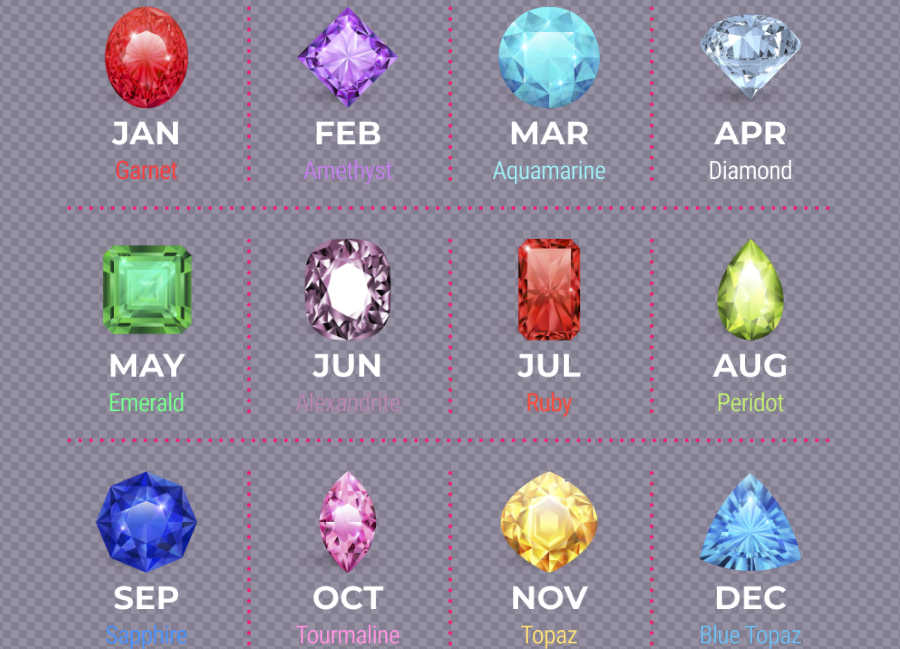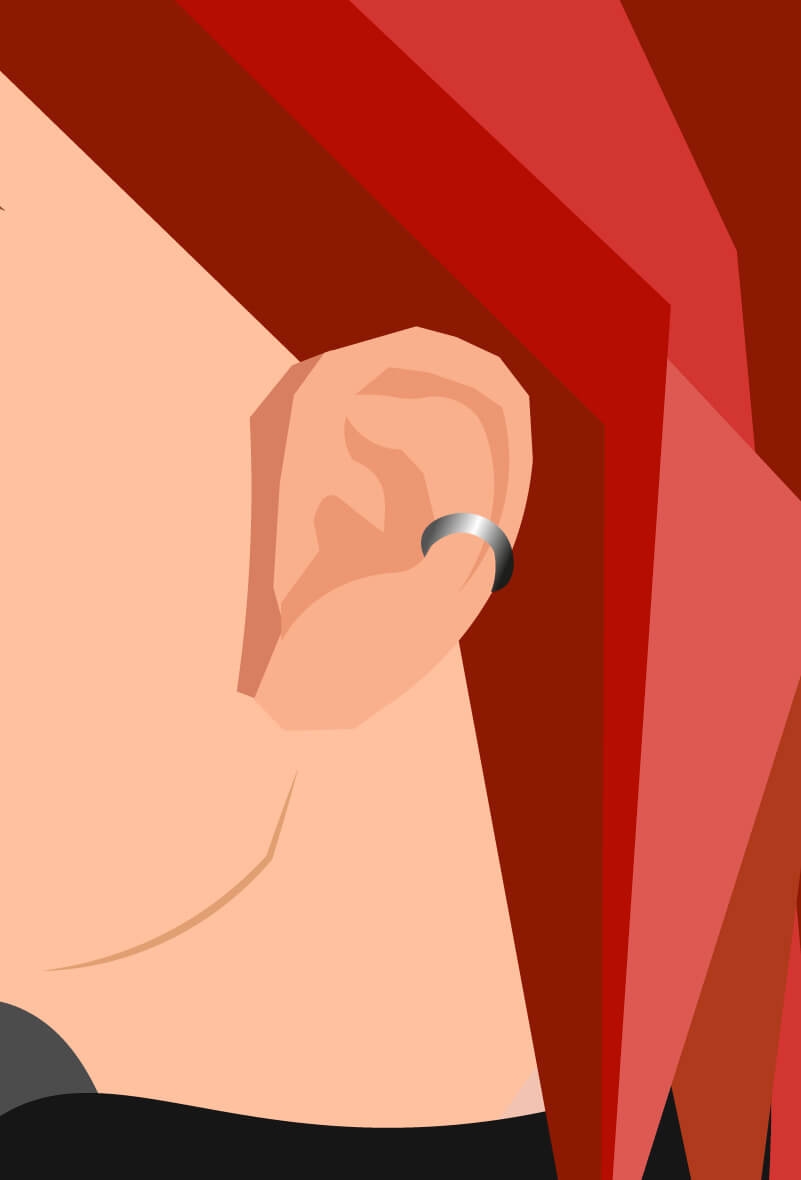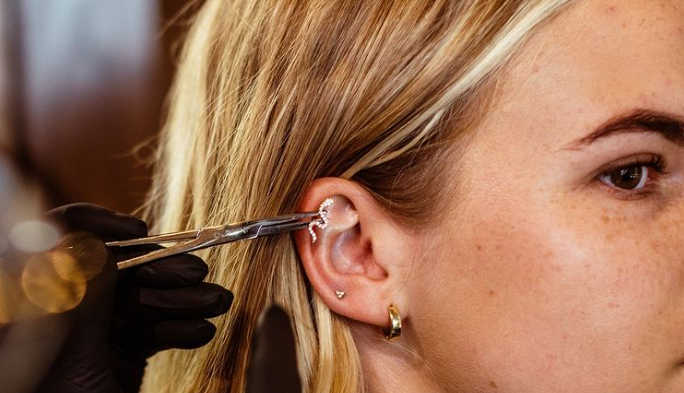Virtually every moment in a young child’s life is a meaningful one. From their first steps and words to their first day of school, parents love celebrating their child’s accomplishments or life milestones. Even something as small as getting your child’s ears pierced can be just as momentous. It may seem trivial to many, but for some parents, it’s a big deal.
If you are a parent who is ready to have your child’s ears pierced, it’s crucial you don’t go into the experience with little to no information on the procedure. While it’s a minor one, ear piercings can be dangerous if the necessary precautions are not taken.
Many parents question when is the best time to get their child’s ears pierced. The American Academy of Pediatrics (AAP) states that “if the piercing is performed carefully and cared for conscientiously, there is little risk, no matter what the age of the child.” However, they also believe that it’s best to hold off on piercings until your child is mature enough to care for it on their own.
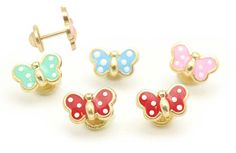
What is the Best Age to Pierce Kids Ears?
6 months old
Generally, piercing your child’s ears when she is an infant is not advised. This is due to the simple reason that a tiny infant lacks the immune strength necessary to fight an infection, should it occur so. Hence, carrying out the piercing after the baby is at least 6 months old or older is recommended.
Where to Go to Get Your Kids Ears Pierced?
Once you’ve decided to go ahead with your child’s ear piercing, the next thing to decide is where to have the piercing performed. Several options exist when it comes to piercing your child’s ears:
- Pediatrician’s office: Not every pediatrician pierces ears, but if yours does, having your child’s ears pierced at the doctor’s office can be ideal. You’ll have a guarantee that the environment and tools used will be clean and sterile.
- Jewelry store: Many jewelry stores offer ear piercing, either for a fee or for free if you purchase a pair of earrings. You can ask at the jewelry store where you’re buying your child’s first earrings if they also do piercings. If they don’t, they might be able to direct you to a place that does offer them.
- Tattoo/piercing parlor: While a tattoo and piercing parlor might look intimidating from the outside, once you’re inside, you’re likely to find a clean and sterile environment that looks a lot like a doctor’s office. Be sure to vet the parlor first by checking out reviews, visiting and asking people you know for recommendations.
- Mall kiosk: Piercing your child’s ears at a kiosk or accessories store at the mall is an option, but it’s usually the least recommended one. Mall kiosks often use piercing guns, which aren’t as sterile as needles. In addition, the person performing the piercing might not be as trained and experienced with the process as a doctor or professional piercer.
3 methods of kids Ear piercing
Piercing needles
As painful as needle piercing sounds, don’t be too quick to frown upon it. It’s one of the most reliable and safer options when it comes to ear piercing for kids. This is provided that your child can stay still during the procedure. As needles are one-use-only, they are generally more hygienic. Piercing needles are also designed to ensure a smooth incision through the skin with minimal pain.
Piercing guns
In the past, piercing guns are one of the most common tools used for piercing kids’ ears in Singapore. The reason is simple — it’s easier to train someone to use this tool as compared to piercing needles. If your child gets fidgety when she’s nervous, piercing guns are one of the best methods as the procedure is swift.
However, this method may cause more tissue trauma. By aggressively firing the blunt studs into the skin via a pressurized spring action, the skin tissues are ripped violently to make room for the earrings. On top of that, the gun squeezes the back of the studs tightly against your child’s earlobes, allowing little room for the wound to breathe and heal properly. Piercing guns are also not as hygienic as piercing needles as many stores simply sterilize the gun with alcohol which may not be sufficient to remove blood particles from previous customers. This is also not the best method for children who are afraid of loud noises.
Disposable cartridge piercing system
Right off the bat, it’s easy to see that a disposable cartridge piercing system is more hygienic than piercing guns. That’s because the cartridge and studs are pre-packed in sterile packaging and ready for use anytime. As its name suggests, disposable cartridge piercing systems are single-use so you need not worry about contamination when you bring your kid for ear piercing. Instead of using aggressive force, the cartridge system gently but swiftly pushes the special piercing stud through the tissue to minimize trauma.
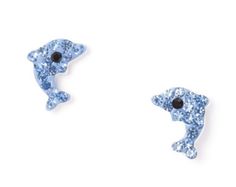
What to Look for When You’re Getting Your Child’s Ears Pierced
One of the big questions parents face when they’re deciding to have their children’s ears pierced is whether it’s better to pierce with a needle or a piercing gun. Although piercing guns are relatively common, many experts, such as the Association of Professional Piercers, recommend using a needle instead of a gun to pierce any part of the body.
The primary reason needles are recommended is that it’s impossible to sterilize a piercing gun. The person using a piercing gun can disinfect it, but they can’t expose it to the high temperatures required to sterilize it.
Another reason needles are preferable to piercing guns is because of the sharpness of the object being pushed through the earlobe. Piercing guns push the post of an earring into the lobe. The post of the earring isn’t as sharp as the point of a hypodermic needle, meaning that the process of piercing the earlobe relies more on the pressure from the gun than the sharpness of the post. There’s a somewhat increased risk of infection and other complications when a piercing gun is used instead of a needle.
Whether you go to a piercing parlor, a doctor’s office or a mall store, you want to make sure the following process happens before the person performing the piercing gets anywhere near your child’s ears:
- They wash their hands or use hand sanitizer.
- They put on a fresh new pair of vinyl gloves.
- They open a sterile package of needles or wipe a piercing gun down with an antiseptic wipe.
- You can ask the person doing the piercing about their sterilization or disinfecting processes. If they can’t give you an answer or aren’t sure how things are sterilized or disinfected, you might want to find another place to go.
Before piercing your child’s ears, the person performing the piercing should clean the earlobe with an antiseptic solution or wipe. If you’re concerned about discomfort from the piercing itself, you can ask the person about using a cream with a topical anesthetic in it. Even if your child’s pediatrician doesn’t offer ear piercing, they might still be willing to give you a prescription numbing cream to make the process more comfortable for your child.
How to Make Sure That Your Kids Feels Minimal Pain During the Ear Piercing?
Many professionals tend to use a topical anesthetic cream on the earlobe made out of lidocaine. This helps in numbing the area and lessening the pain down to a simple prick. This needs to be applied in generous amounts, about 15 minutes or so.
Another way of carrying out the same task is by making use of ice. Holding an ice cube on the earlobe for a long time tends to reduce the sensitivity of the nerve endings in that area for a short period of time. So this can be done just before the lobe is pierced with the needle.
Neither of the two ways can reduce the pain completely. So it is important to support your child and make her understand, or distract her in such a way that she doesn’t notice the pain initially. The pain could also develop later on as the anaesthesia wears off. Let her hold your hands tightly during the process and advise her to take deep breaths to calm down.
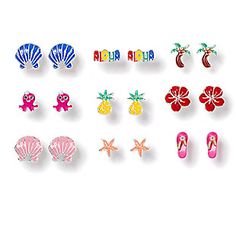
How to Choose Your Kids First Pair of Earrings?
When you’re picking out the first pair of earrings for your baby or child, you’ll want to keep a few things in mind.
First, remember that your child is going to be wearing earrings for six weeks straight. For that reason, it’s a good idea to choose a pair they like. A lot of jewelry stores will offer the option of selecting earrings with the child’s birthstone or letting you choose another gemstone that’s equally appealing to the child.
As the post of the earring goes through your child’s earlobe, it’s essential to choose a sterile, hypo-allergenic metal. The American Academy of Pediatrics recommends choosing gold-post earrings. The Association of Professional Piercers recommends 14k gold or higher, as well as earrings with surgical stainless steel posts.
Whatever type of earring you choose, you want to be sure that it’s nickel-free. Many people, including about 11 million children, are allergic to nickel. Coming into contact with the metal can cause a reaction known as contact dermatitis.
Along with paying attention to the metal, the earring is made from, it’s also important to pay attention to the style of the earrings. Here are a few tips to follow:
- Choose studs: Since your child will be wearing the earrings for at least six weeks straight, pick a pair of studs instead of hoops or dangling earrings. You don’t want the earrings to get caught on anything, nor do you want your child to tug at or play with them.
- Smaller is better: If you’re piercing a baby’s ears, pick earrings that are flat and small so that your little one is less likely to pull the studs out from their earlobes.
- Select a style your child likes: If you’re piercing an older child’s ears, let them pick out the style of earrings. They might want a gemstone stud, or they might prefer a small stud in the shape of a butterfly, flower or something similar.
Read more: hypoallergenic earrings for kids
How to Care for Your Kids Ears After Piercing?
How long do baby ear piercings take to heal? Initial healing takes about six weeks. After the first six weeks, you can replace the earrings with a new pair, but don’t let the holes go without jewelry for an extended period for the first six months after piercing.
Taking good care of your child’s recently pierced ears will help to minimize the risk of infection and will also help the holes heal better. Here’s what you and your child can do to take good care of their ears:
- Only touch the pierced area with clean hands: Wash your hands and make sure your child washes their own hands before they touch their earrings.
- Clean the area with an alcohol pad or saline solution: The person who pierced your child’s ears will provide detailed instructions, but most likely, you’ll want to clean the area — front and back — with rubbing alcohol or saline at least twice a day.
- Twist the earrings: Twisting the studs at least once or twice a day will help to keep them from sticking to the healing hole.
- Inspect the earrings: When you clean and twist your child’s earrings, check to make sure the backing is firmly in place.
- If you notice any redness or pus near the piercing, if the area looks swollen or if your child is saying their ears hurt, it’s a good idea to schedule a visit to your child’s doctor to make sure there’s no infection.
What Are the Signs of Infection After Ear Piercing?
If the right precautions are not taken while piercing, there are chances that the hole might get infected. The infection starts showing itself in the form of swelling and redness in the area of the ear. Your child might feel the need to itch it and can experience pain. If there is any drainage occurring, this could be a sign of pus formation. A doctor would be able to tell if the symptoms are that of an allergy or an infection. An allergy can be easily mitigated by using different earrings. In case of an infection, the earrings must be removed, and the area must be cleaned. A dose of antibiotics would also be prescribed to fight off the bacteria. During the healing, the hole might close up, and this might need to be pierced again. One should wait at least for 6-8 months before attempting a piercing again and should avoid doing so repeatedly.
Effects of Ear Piercing in Young Kids
- During playtime, your child’s pierced earlobe may come in contact with dirty hands or objects, and it may lead to an infection.
- Any infected skin will heal and grow over the earrings. This might necessitate removing the rear stud that could sometimes be covered by the skin. If the earring has already been removed, a repeat piercing might have to be conducted.
- During sports or physical activities, a larger earing could get stuck in clothes or other things, and this might lead to the earlobe being pulled. This can injure the earlobe or even rupture it, so caution must be exercised.
- If the size of the piercing is too small, this could cause the new skin to blend with the earring.
What Activities Your kids Needs to Avoid After an Ear Piercing?
Until the piercing wound has properly healed, it is advised that your kids do not engage in extreme physical activities or play games where there is a lot of physical contact between kids. Avoid swimming as well since the germs from the pool could end up infecting the wound.
Ear piercing for children can make them quite happy and excited. Many kids tend to see their parents’ earrings and want the same for themselves. But it is essential to ensure that proper care is taken to prevent infections.
Ten articles before and after
5 Best Types Of Earrings For Kids And 10 Safety Tips To Protect Kids from Jewelry Dangers
How to identify whether Jewelry is Allergic And What to Wear?
8 Reasons Why You Should Stock Kids Silver Hypoallergenic Jewelry
Top 8 Kind Of Earrings For Sensitive Ears
Best 5 Types of Earrings For Babies or Toddlers
How To Choose The Right And Best Earrings For Babies?
How Do Men Wear The Ring? Is It Ok For Men To Wear Women Rings?
Is Cobalt Hypoallergenic? What Are the Pros and Cons of Cobalt Rings?
